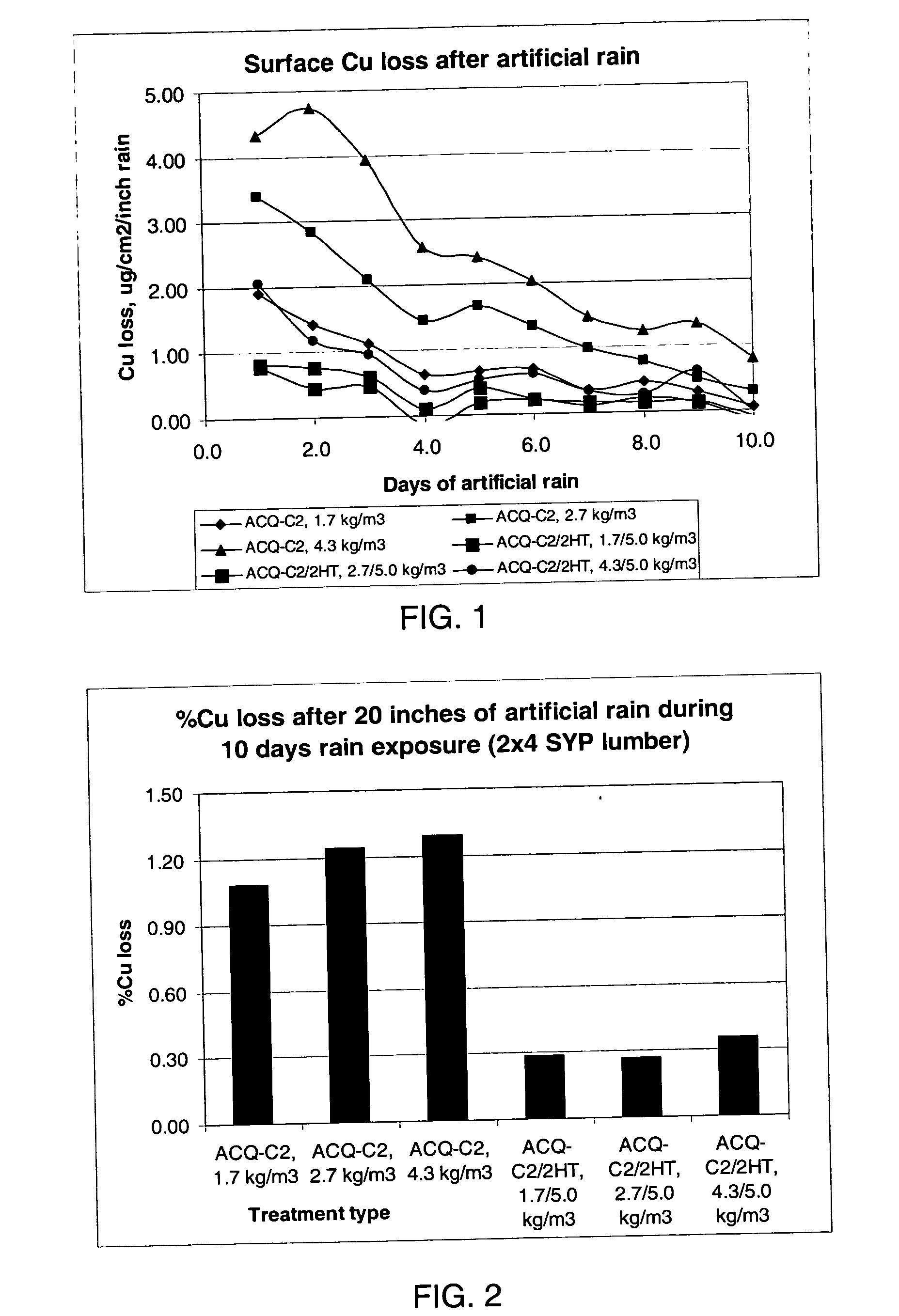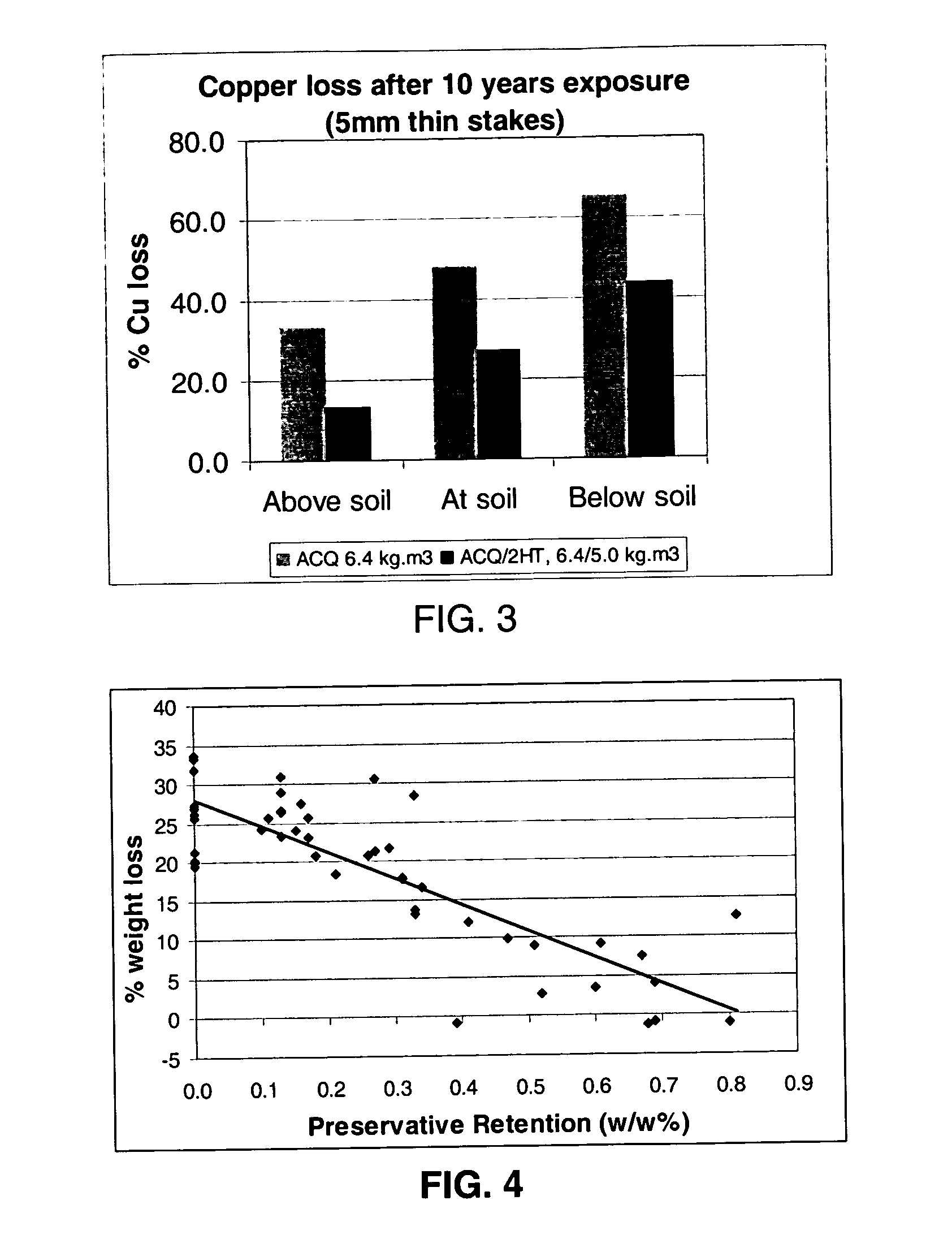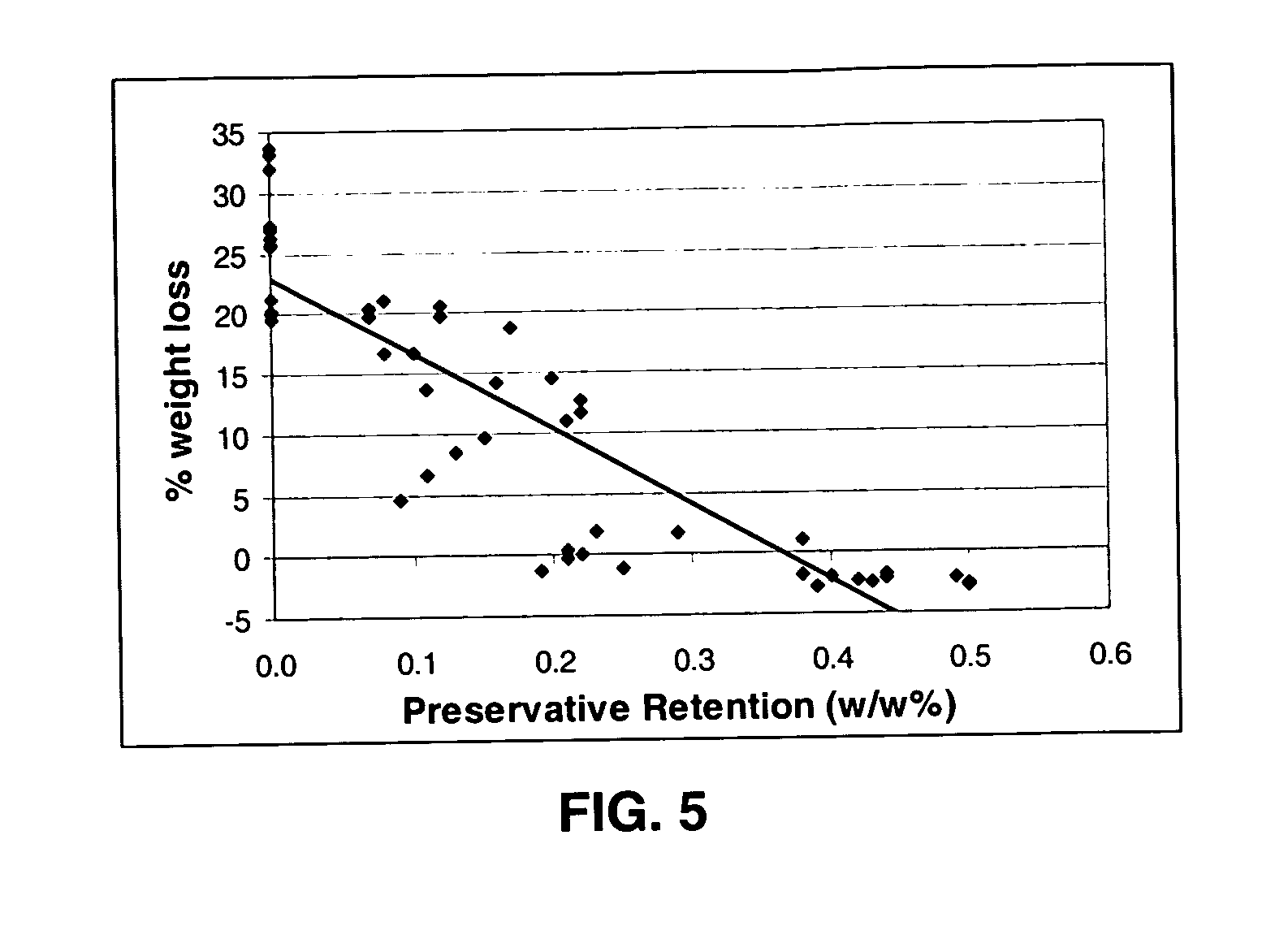Long-chain quaternary ammonium compounds as wood treatment agents
- Summary
- Abstract
- Description
- Claims
- Application Information
AI Technical Summary
Benefits of technology
Problems solved by technology
Method used
Image
Examples
example 1
[0098] The effect of long chain quaternary ammonium compounds, using 2HT as an example, on preservative loss from wood preservative system treated wood surface when in contact with water is demonstrated. Southern yellow pine boards measuring 89×39×305 mm are treated with ACQ®-C2 (a component of ACQ® wood preservative containing cupric-monoethanolamine complex solution) with or without 2HT at different concentrations. After proper drying, the boards are subjected to an artificial rainfall over a period of 10 days with a total rainfall equivalent of 20 inches (508 mm). The water run-off from each board is collected separately and the copper concentration analyzed by ICP. Copper loss is expressed as micrograms of copper per square centimeter of wood surface per inch of rainfall (μg / cm2 / inch), or as a percentage of total copper loading in the treated wood. The results are shown in Table 1 and FIGS. 1 and 2.
TABLE 1Treatmentμg / cm2 copper loss / inch rain(CuO / 2HT, kg / m3)1.02.03.04.05.06.07...
example 2
[0116] An accelerated green house soil-bed decay test (AWPA Standard Test Method E14), shows that 2HT can significantly reduce biocide leaching, in this case the copper as well as biocidal quaternary ammonium compounds. Selected stakes are analyzed for active preservative ingredients after 10 years of exposure in the soil contact test. 2HT is shown to be able to reduce the leaching of both the copper and quaternary ammonium components of the ACQ® wood preservative. In soil-contact portions of the stake, copper loss from ACQ® / 2HT wood preservative treated stakes is 33% lower than stakes treated with ACQ® wood preservative alone. Above the soil line (non soil-contact portion), copper loss is reduced by more than 50% due to the presence of 2HT (FIG. 3). The data for FIG. 3 is provided in Table 3.
TABLE 3Average % Cu depletedAbovesoilAt soilBelow soilACQ 6.4 kg · m333.147.965.5ACQ / 2HT, 6.4 / 5.0 kg · m313.227.043.8
[0117] The reduction of preservative loss could lead to longer service lif...
example 3
[0118] The same accelerated green house soil-bed decay test (AWPA Standard Test Method E14) shown above also demonstrates that 2HT can also enhance the efficacy of the copper based wood preservative systems, in this case the ACQ® wood preservative. In this example, the addition of 0.8% 2HT improves the performance of ACQ® wood preservative at all three retention levels tested after about 10 years field exposure. The results are shown in Table 4.
TABLE 4Accelerated Soil-bed Decay Test of Southern Pine Mini-Stakes* (Harrisburg NC)TreatmentLevelMeasurement time (months after beginning of test)Type(kg / m3)9 mo.34 mo.50 mo.63 mo.77 mo.92 mo.108 mo.119 mo.ACQ ® wood298.881.062.90.00.00.00.00.0preservative4100.098.985.955.031.04.00.00.06.4100.0100.098.689.076.523.00.00.0ACQ ® wood2100.094.281.947.030.016.00.00.0preservative + 0.8%499.999.797.592.083.066.061.422.92HT6.4100.0100.098.998.093.586.082.971.4Untreated054.027.50.00.00.00.00.00.0
[0119] A decay rating of 100 means no decay, and a ra...
PUM
| Property | Measurement | Unit |
|---|---|---|
| Percent by mass | aaaaa | aaaaa |
| Percent by mass | aaaaa | aaaaa |
| Percent by mass | aaaaa | aaaaa |
Abstract
Description
Claims
Application Information
 Login to View More
Login to View More - Generate Ideas
- Intellectual Property
- Life Sciences
- Materials
- Tech Scout
- Unparalleled Data Quality
- Higher Quality Content
- 60% Fewer Hallucinations
Browse by: Latest US Patents, China's latest patents, Technical Efficacy Thesaurus, Application Domain, Technology Topic, Popular Technical Reports.
© 2025 PatSnap. All rights reserved.Legal|Privacy policy|Modern Slavery Act Transparency Statement|Sitemap|About US| Contact US: help@patsnap.com



